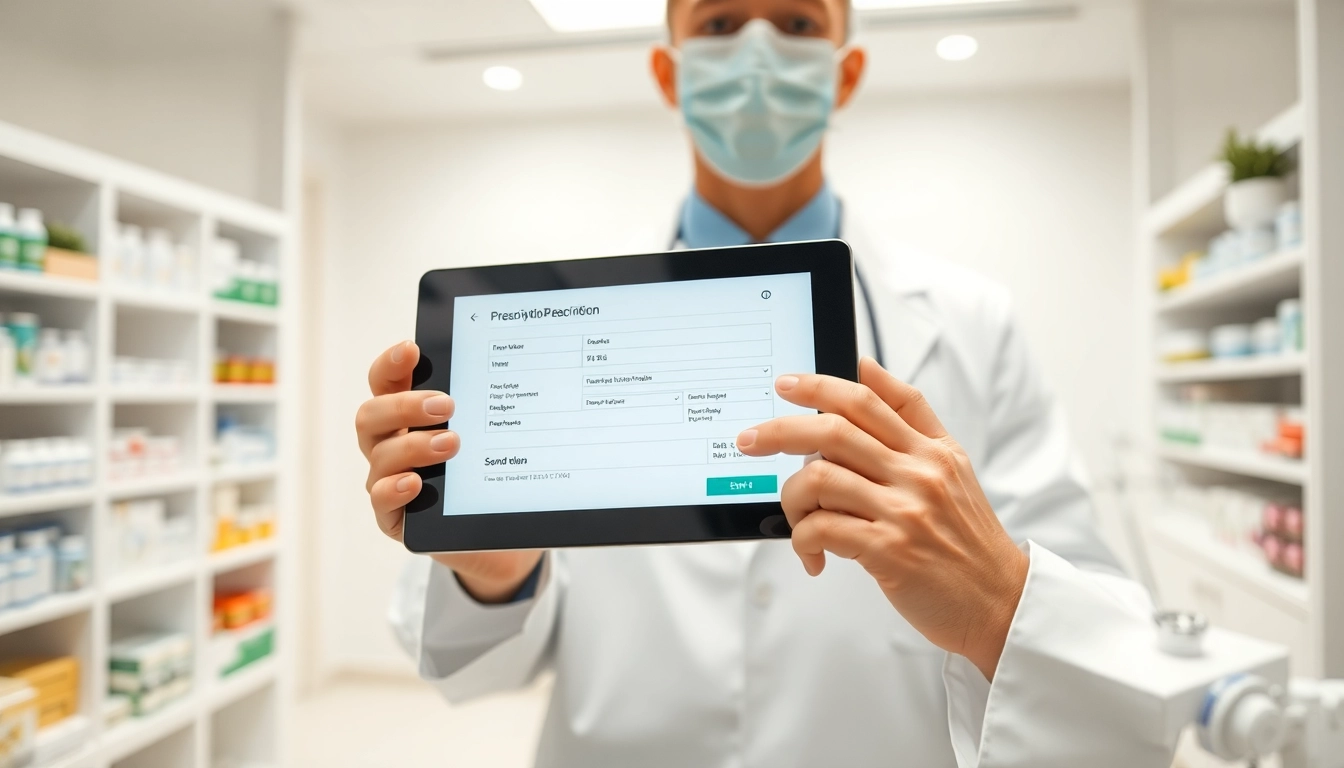
Understanding E-Prescribing: A Comprehensive Overview
E-prescribing, or electronic prescribing, is a transformative process in healthcare that allows healthcare providers to send prescriptions directly to pharmacies using digital technology. This method has gained immense popularity as it streamlines medication management and enhances patient safety. But you may wonder, how does eprescribing work? To answer this question, we will delve into various aspects of e-prescribing, including its definition, historical context, key components, operational processes, benefits, challenges, and future directions.
What is E-Prescribing?
Definition and Overview
E-prescribing is the electronically transmitted prescription of medication from a prescriber to a pharmacy, which eliminates the need for paper prescriptions and manual communication methods like phone calls or fax. This technology has redefined how prescriptions are handled within healthcare systems, allowing for a more accurate, efficient, and secure process.
History of E-Prescribing
The evolution of e-prescribing began in the early 2000s as healthcare organizations and technology companies started recognizing the need for more secure and efficient ways to manage prescriptions. Early versions involved limited computer-based solutions before expanding into integrated health information systems that connect patients, prescribers, and pharmacies. Regulatory initiatives also played a crucial role in promoting e-prescribing, encouraging wider adoption through incentives and mandates.
Key Components of E-Prescribing
There are several essential components that make e-prescribing effective:
- Electronic Health Records (EHR): Systems that allow healthcare providers to document patient care electronically.
- E-prescribing Software: This application enables the electronic generation and transmission of prescriptions, ensuring accuracy and security.
- Pharmacy Management Systems: Software used by pharmacies to receive and process prescriptions efficiently.
- Surescripts Network: A leading e-prescribing network that connects prescribers and pharmacies across the United States, allowing for seamless communication.
How Does E-Prescribing Work in Practice?
Step-by-Step Process
The workflow for e-prescribing can be broken down into several pivotal steps:
- Prescriber Access: The healthcare provider accesses the e-prescribing system through EHR or dedicated software.
- Patient Encounter: During the patient consultation, the provider assesses the patient’s needs and makes a medication decision.
- Prescription Entry: Using the software, the provider inputs the medication details, including dosage and instructions.
- Verification: The system verifies the prescription against the patient’s records, checking for allergies and drug interactions.
- Electronic Transmission: The prescription is sent electronically to the selected pharmacy via a secure network.
- Pharmacy Notification: The pharmacy receives the prescription, reviews it, and prepares the medication.
- Patient Notification: The patient is notified when the prescription is ready for pickup or delivery.
Technological Requirements
Implementing e-prescribing involves certain technological prerequisites, including:
- Access to EHR Software: Providers need a dedicated, compatible EHR system that supports e-prescribing capabilities.
- Secure Internet Connection: A reliable internet connection is necessary for real-time transmission of prescriptions to pharmacies.
- Integration with Pharmacy Systems: Systems must be able to communicate with pharmacy management software for effective data exchange.
- Compliance Standards: Adherence to healthcare regulations including HIPAA to protect patient information is critical.
Common Use Cases
E-prescribing is employed across various healthcare environments, including:
- Primary Care: General practitioners and family physicians use e-prescribing for routine medications.
- Specialist Care: Specialists, such as dermatologists or oncologists, utilize e-prescribing for tailored treatments.
- Emergency Care: Hospitals and urgent care facilities benefit from expedited prescription processes for immediate care.
- Chronic Disease Management: E-prescribing aids in managing medications for patients with chronic illnesses, improving adherence and monitoring.
Benefits of E-Prescribing
Improved Patient Safety
One of the most significant advantages of e-prescribing is its contribution to enhanced patient safety. By eliminating handwritten prescriptions, it drastically reduces the risk of misinterpretation and medication errors. Additionally, built-in checks for potential drug interactions or allergies help prevent harmful prescriptions.
Increased Efficiency for Healthcare Providers
E-prescribing streamlines the prescription process, allowing healthcare providers to spend less time on administrative tasks. The quick access to comprehensive patient medication history enables providers to make informed decisions promptly, thereby improving workflow and productivity.
Enhanced Prescription Accuracy
Electronic prescriptions provide an accurate representation of medication instructions, ensuring pharmacies receive clear and legible prescriptions. This accuracy not only aids in preventing errors during medication dispensing but also improves communication between healthcare providers and pharmacies.
Challenges and Limitations of E-Prescribing
Technical Barriers
Although the benefits are significant, there are challenges associated with e-prescribing. Technical issues, such as system outages or interoperability problems between different software systems, can disrupt the workflow and hinder prescription processing.
Provider Training Needs
Healthcare providers and staff require adequate training to utilize e-prescribing systems effectively. There may be a learning curve for those accustomed to traditional paper prescriptions. Continuous education and support are crucial for successful implementation.
Integration with Existing Systems
Successful e-prescribing also depends on the ability to integrate with existing health information systems. Incompatible software can lead to inefficiencies and errors, making it imperative for healthcare organizations to choose scalable solutions that meet integration standards.
The Future of E-Prescribing
Trends in Digital Prescription Technology
The future of e-prescribing is promising, with several emerging trends likely to shape its evolution. Innovations in artificial intelligence (AI) and machine learning are expected to enhance prescription workflows by providing decision support and predictive analytics based on patient data.
Predictive Analytics and E-Prescribing
As data analytics technology advances, e-prescribing systems will increasingly incorporate predictive algorithms to anticipate patient needs. This will enable healthcare providers to make proactive prescribing decisions, potentially preventing complications and improving overall patient outcomes.
The Role of Patient Engagement
Patient engagement will become a key element in enhancing the effectiveness of e-prescribing. Empowering patients with direct access to their prescription information via patient portals will improve adherence and foster a collaborative approach to managing their health.
Conclusion
As healthcare continues to evolve, understanding how does eprescribing work is crucial for both healthcare providers and patients. The integration of e-prescribing into daily healthcare practices significantly improves accuracy, efficiency, and patient safety. Despite some hurdles, the benefits of adopting this technology far outweigh the challenges, making e-prescribing an essential component of modern healthcare.







